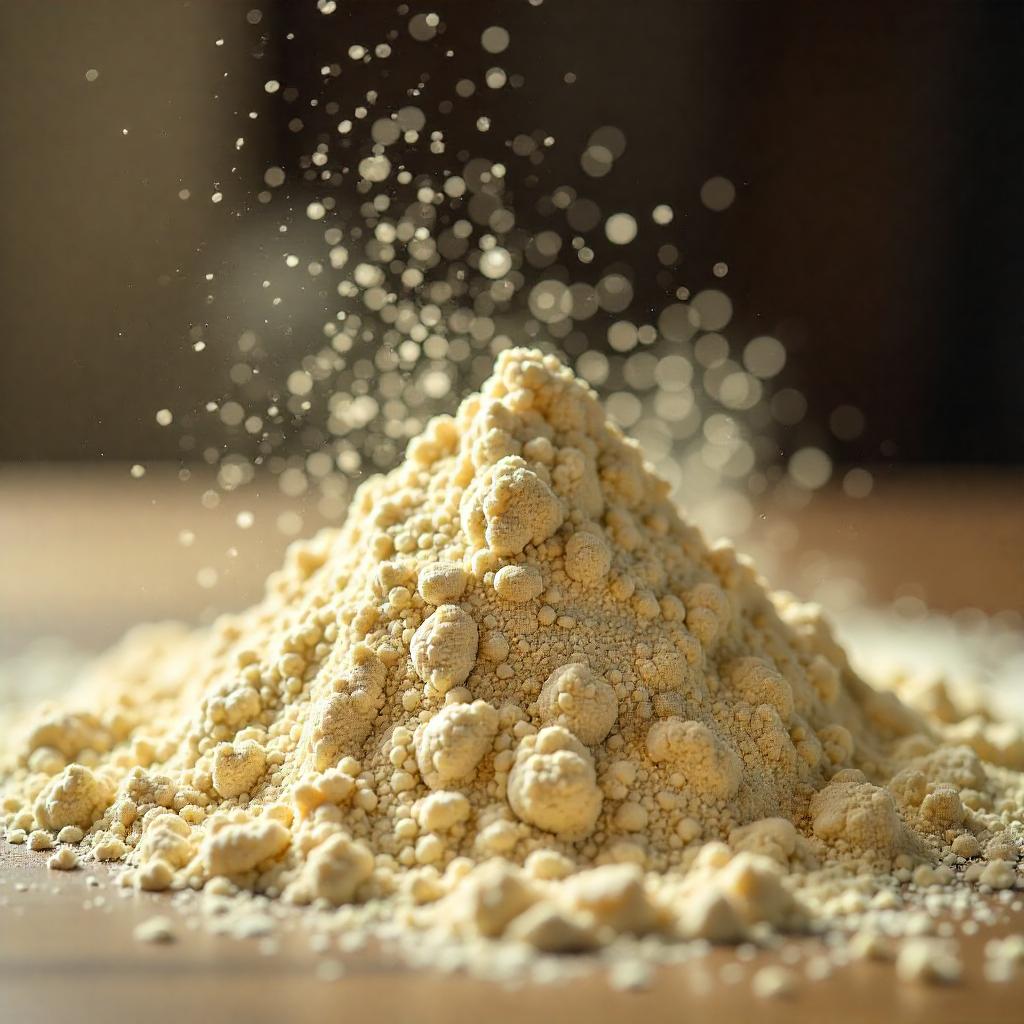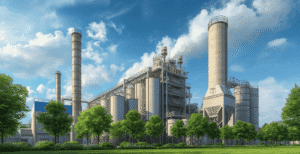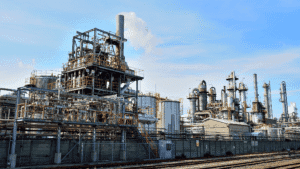Flour Dust
Flour dust is a fine powder made from ground grains, especially wheat. It is common in places like bakeries, factories, and food manufacturing. Understanding flour dust is important because it can be harmful to health and can cause explosions if not managed properly.
- Flour dust can irritate the lungs and cause breathing problems.
- Many people who work with flour dust may develop allergies or asthma.
- Flour dust can create a fire hazard when it builds up in the air or on surfaces.
- Food processing industries must control flour dust to keep workers safe.
- Proper ventilation and safety equipment are essential in workplaces that handle flour dust.
Health Risks Associated with Flour Dust Exposure
Health risks associated with flour dust exposure can be serious. Prolonged exposure to flour dust can lead to various health problems, especially for people who work in bakeries or flour mills. Studies have shown that workers exposed to flour dust face higher risks of respiratory issues.
- Asthma: Asthma is a condition that makes it hard to breathe. Studies show that people who are around flour dust often have more asthma attacks. This can cause coughing, wheezing, and trouble breathing.
- Bronchitis: Bronchitis is an inflammation of the airways. It can happen when someone breathes in flour dust for a long time. This can lead to a persistent cough and mucus production.
- Allergic Reactions: Some people can develop allergies to flour dust. This can cause sneezing, itching, and rashes. In severe cases, it can lead to difficulty breathing.
- Chronic Obstructive Pulmonary Disease (COPD): COPD is a long-term lung disease. Studies show that long-term exposure to flour dust can increase the risk of developing COPD. This disease makes it hard to breathe and can get worse over time.
- Lung Infections: Breathing in flour dust can also lead to lung infections. These infections can make someone feel very sick and can take a long time to recover from.
Health experts recommend that workers who are around flour dust wear protective gear. This can help reduce the risk of these serious health issues.
Combustibility of Flour Dust: Understanding Explosion Hazards
Flour dust is considered combustible because it can catch fire and cause explosions under certain conditions. When flour is ground into a fine powder, it creates dust that can easily mix with air. This mixture can ignite and lead to a fast and dangerous explosion.
- First, the amount of flour dust in the air matters. If there is a lot of flour dust in a small space, it increases the chance of an explosion.
- Second, the size of the flour particles is important. Smaller particles create a larger surface area. This means they can catch fire more easily.
- Third, there needs to be an ignition source. This could be a spark, a flame, or even heat. If flour dust is present and there is an ignition source, an explosion can happen.
- The fourth factor is the confinement of the dust. If flour dust is in a closed space, like a silo or a factory, the pressure can build up. When the dust ignites, the pressure can cause a massive explosion.
There have been historical examples of flour dust explosions that show how serious this hazard can be. One of the worst was in 1878 in a flour mill in Minnesota. An explosion killed 18 people and destroyed the building. Another tragic event happened in 2008 in a factory in Georgia, where an explosion killed 14 workers. These examples remind everyone how dangerous flour dust can be when the right conditions exist.
Flour dust is a serious risk in places where it is processed. It is important for workers to understand these risks and take safety measures to prevent explosions.
Regulatory Standards and Guidelines for Flour Dust Management
Regulatory standards and guidelines for flour dust management focus on keeping workers safe. Flour dust can be harmful if people breathe it in for too long. Organizations like OSHA, which stands for the Occupational Safety and Health Administration, help set rules to protect workers from this dust.
OSHA recommends a certain limit for how much flour dust workers can be exposed to. They aim to keep this level low to prevent health issues. The recommended exposure limit (REL) for flour dust is 15 milligrams per cubic meter of air for total dust and 5 milligrams for respirable dust.
Below is a table that summarizes key regulatory standards and their permissible exposure limits for flour dust:
| Organization | Standard | Permissible Exposure Limit |
| OSHA | Total Dust | 15 mg/m³ |
| OSHA | Respirable Dust | 5 mg/m³ |
These guidelines help ensure that workplaces are safe for everyone. Following these standards can reduce the risk of health problems related to flour dust exposure.
Effective Measures for Controlling Flour Dust in the Workplace
Effective measures for controlling flour dust in the workplace are important to keep workers safe. Flour dust can cause health problems if not managed well. There are several strategies to control it, and they include engineering controls, administrative controls, and personal protective equipment (PPE). Regular maintenance and good housekeeping also play a big role.
- Engineering Controls
Engineering controls help reduce dust at the source. These methods include:
- Local Exhaust Ventilation: This system pulls flour dust away from workers. It captures dust at its source and prevents it from spreading.
- Dust Collection Systems: These systems collect dust from machines. They help keep the air clean in the workplace.
- Air Filtration Units: These units filter the air. They can remove flour dust from the environment.
- Administrative Controls
Administrative controls set rules and practices to reduce exposure to flour dust. Some actions include:
- Workplace Policies: Set rules for dust control. Make sure everyone follows them.
- Training: Teach workers about flour dust dangers and how to manage them.
- Regular Breaks: Schedule breaks for workers. This helps reduce their exposure to dust.
- Personal Protective Equipment (PPE)
Personal protective equipment helps protect workers from flour dust. Some common PPE includes:
- Dust Masks: These masks filter out flour dust. Workers should wear them in dusty areas.
- Safety Goggles: These protect the eyes from dust. They should be worn when working with flour.
- Protective Clothing: This clothing helps prevent dust from sticking to skin and clothes.
Regular maintenance and housekeeping are key in controlling flour dust. Keeping machines clean helps them work better and reduces dust. Also, cleaning the workplace regularly stops dust from building up. It is important for everyone to work together to keep the environment safe and clean.
Implementing Dust Collection Systems: Best Practices
Implementing dust collection systems plays a key role in managing flour dust. These systems help keep the air clean and safe in places where flour is processed. One common type of dust collection system is a baghouse collector. This system uses bags to filter out dust from the air. Here are some best practices for selecting, installing, and maintaining dust collection systems for optimal performance.
- Identify Dust Sources: First, find out where the flour dust comes from. This helps in choosing the right dust collection system.
- Choose the Right System: Select a dust collection system that fits the needs of the work area. Consider factors like the amount of dust and the space available.
- Ensure Proper Installation: Install the dust collection system according to the manufacturer’s guidelines. This helps it work effectively.
- Check Airflow: Make sure the airflow is strong enough to capture all the dust. Weak airflow can allow dust to escape into the air.
- Use the Right Filters: Use high-quality filters in the system. Baghouse collectors need filters that can trap fine flour dust.
- Regular Maintenance: Clean and maintain the dust collection system regularly. This keeps it working at its best and reduces the risk of breakdowns.
- Monitor Performance: Keep an eye on how well the system works. Look for signs of clogging or reduced airflow.
- Train Employees: Teach workers about the dust collection system. They should know how to use it properly and recognize if it needs attention.
- Follow Safety Guidelines: Always follow safety rules when working with dust collection systems. This helps protect workers from dust exposure.
- Plan for Upgrades: Over time, the needs of the workspace may change. Be ready to upgrade or change the dust collection system if needed.
Case Study: Successful Flour Dust Management in the Food Industry
A company in the food industry faced serious flour dust hazards. This company was a large bakery that produced bread and pastries. The workers often complained about respiratory issues. The flour dust made the air unhealthy. The management knew they had to act fast to protect their workers.
- Challenges
The bakery had many challenges. First, the flour dust created safety risks. It could cause fires and explosions if not controlled. Second, the workers struggled with health problems due to breathing in the dust. They often felt tired and had trouble concentrating. Finally, the company faced strict regulations from the government. They needed to meet safety standards to keep their business running. - Solutions
To solve these problems, the bakery took several steps. First, they installed high-efficiency dust collection systems. These machines captured flour dust at the source. Second, they trained workers on safe practices. The workers learned how to minimize dust creation. Third, the company improved cleaning routines. They scheduled regular cleaning to remove any dust build-up. - Outcomes
The outcomes of these solutions were positive. The air quality in the bakery improved significantly. Workers reported fewer health issues. They felt safer and more focused on their tasks. The company also met government regulations. This helped them avoid fines and keep their business running smoothly. Overall, the bakery created a safer and healthier work environment.
Highlighting Intensiv-Filter Himenviro’s Solutions
Intensiv-Filter Himenviro is a global leader in industrial filtration solutions. They specialize in creating effective systems that control flour dust. The company focuses on sustainability and follows all environmental rules. Their aim is to provide safe and clean working environments.
- They offer tailored solutions for flour dust control.
- Their systems help reduce dust emissions and improve air quality.
- They use advanced technology to design efficient filtration systems.
- Their products meet strict environmental regulations.
- They are committed to creating sustainable solutions for industries.
Conclusion
Flour dust hazards are important to understand and manage. Flour dust can cause health issues and accidents in workplaces. It is crucial to know how to control this dust effectively. Implementing dust control measures helps keep everyone safe. It is wise to consider partnering with experts like Intensiv-Filter Himenviro. They provide great solutions for managing flour dust.
Readers should take action now. They can start by improving their dust control methods. Seeking help from professionals can make a big difference. Stay safe and informed about flour dust hazards.



